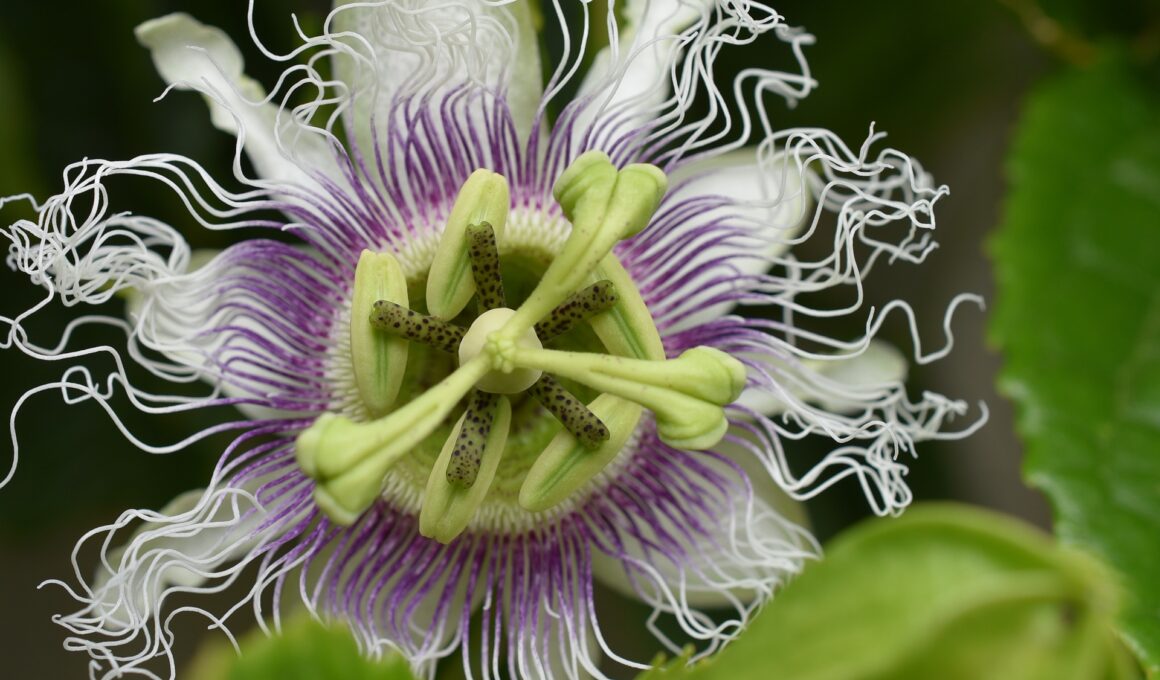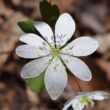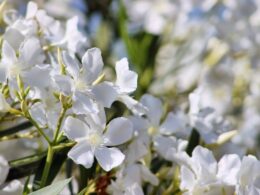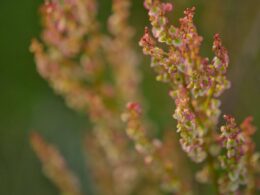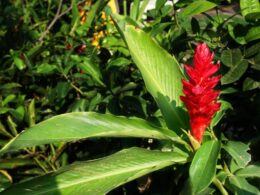A Short Story of the Flower
The passiflora, or passionflower, is a beautiful and unique plant that has been prized by gardeners for centuries. The passionfruit flower, is a species of flowering plant that is native to tropical and sub-tropical regions of the Americas. The passiflora gets its name from the Latin word for “passion” or “suffering,” referring to the Passion of Christ. The passiflora is a climbing vine that can grow up to 30 feet in length. The leaves are large and lobed, and the flowers are brightly colored with a distinct center. The passiflora also provides the popular, juicy fruit known as the passionfruit.
Passionfruit Flower Characteristics
The passionfruit flower is one of the most beautiful and unusual flowers you’ll ever see. It’s shaped like a star, with five petals that are each a different color. Passionfruit flowers are typically white or yellow, but the colors vary depending on the variety of passionfruit. They might be in shades of yellow, orange, and purple. The fruits of the passiflora are about the size of a lemon.
The flowers have a sweet, fruity aroma that is similar to the taste of the passionfruit itself. When the fruit is ripe, the flowers will turn brown and begin to wilt. Passionfruit is high in vitamin C and fiber, and it has a distinctive tart flavor. The passiflora is an important plant in many cultures, and it has been used medicinally for centuries. Today, the passiflora is grown throughout the world for its beauty and its delicious fruit.
Growing Guide: Care and Cultivation
Passionfruit is a fast-growing, evergreen vine that produces edible fruit. The fruits are round or egg-shaped and have a leathery skin with a juicy, tart flesh. Passionfruit isnative to tropical regions of South America, but it can be grown in other parts of the world as well. If you’re interested in growing passionfruit, there are a few things you should know about care and cultivation.
- Passionfruit care is relatively simple. The passionfruit flower requires full sun and well-drained soil. It is tolerant of most soil types, but prefers slightly acidic conditions.
- Passionfruit can be grown from seed, but it is more commonly propagated by cuttings. When planting passionfruit, it is important to choose a cultivar that is suited to your climate. In general, there are two main types of passionfruit: those that produce fruit on current season’s growth (e.g., ‘Black Prince‘) and those that produce fruit on last season’s growth (e.g., ‘Purple Passion‘).
- Once established, passionfruit vines are relatively drought-tolerant and do not require much fertilizer. However, they will benefit from occasional applications of compost or other organic matter.
- They are also heavy feeders and will benefit from regular applications of fertilizer. Watering passionfruit vines regularly will help to produce sweeter fruit.
- Harvesting passionfruit can be done by simply picking the fruit when it is ripe. The fruit will start to wrinkle when it is ready to be picked.
There are many cultivars of passionfruit available. Some of the more popular cultivars include Purple Passion, Yellow Passion, and Granadilla. Each cultivar has its own distinct flavor. As you can see, the passiflora is an easy plant to grow and can be cultivated in most climates.
The Pollination Process of the Passionflower
The pollination of passionfruit flower is an interesting process. The flowers are pollinated by a variety of different insects, including bees, flies, and beetles. Each type of insect has a different method of pollinating the flower. For example, bees will crawl into the flower and collect pollen on their bodies. The pollinated flowers will then produce fruit that is high in sugar content. This sugar is used by the insects to make honey. The pollination of passionfruit flowers is essential for the production of fruit. Without pollination, the fruit would not be able to develop properly.
Usage of the Passion Fruit Flower: Vine, Perfumes and More
The passionfruit flower is most commonly used in the pruning of vines. This is because the flower produces fruit that is high in sugar content. The pruning of vines allows for the grape to concentrate its flavor and produce a more robust flavor. In addition, pruning also helps to increase the size of the grape.
- The passionfruit flower is used in the production of wine. The flowers are added to the wine must, which is the crushed grapes before fermentation. The flowers add a particular flavor to the wine that is often described as being floral or fruity. Passionfruit wine is most commonly produced in Italy and South Africa.
- The passionfruit flower is also very fragrant, making it a popular choice for perfumes and scented candles. If you ever get a chance to smell one up close, you’ll definitely understand why!
- Passionflowers are not only beautiful, but they are also delicious! The fruits of the passiflora can be eaten fresh or made into juices, jams, cocktails and jellies. Passionfruit flowers are most often used in drinks or as a garnish for desserts. They can also be eaten raw, but their strong flavor can be overpowering. If you’re looking to add a bit of sweetness and flavor to your next dish, consider using passionfruit flowers.
The passionfruit flower is a beautiful and unique blossom that can be used in a variety of ways. When pruning a passionfruit vine, for example, it is advisable to leave some of the flowers intact. Not only will this help to ensure a good crop of fruit, but it will also allow the vine to continue to produce new flowers.
- The flowers can also be used as decoration, adding a touch of elegance to any arrangement.
- In addition, they can be used to make a variety of herbal teas.
The passionflower is a versatile and valuable plant, and its uses are sure to continue to grow.





